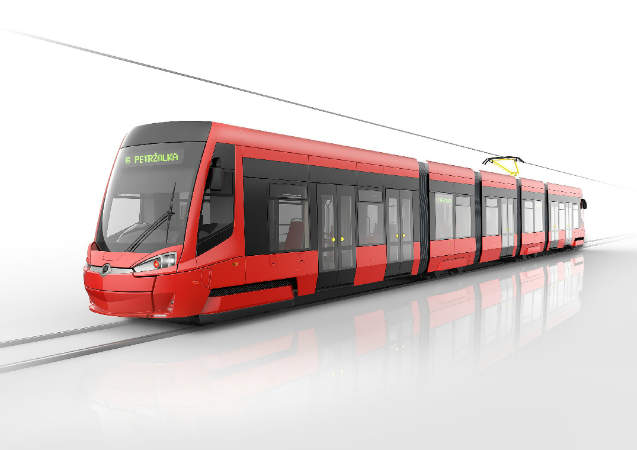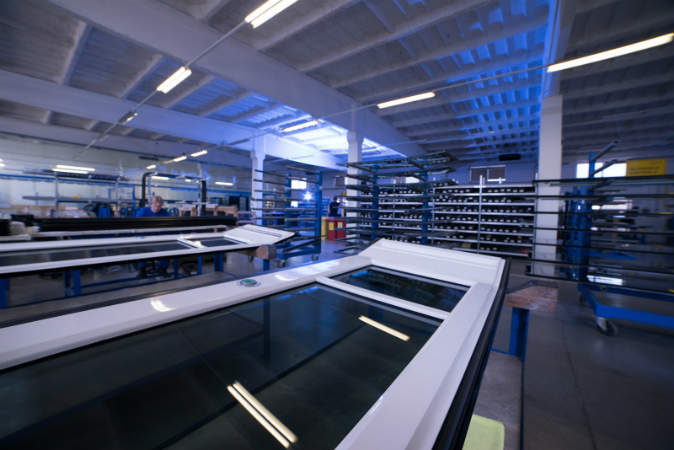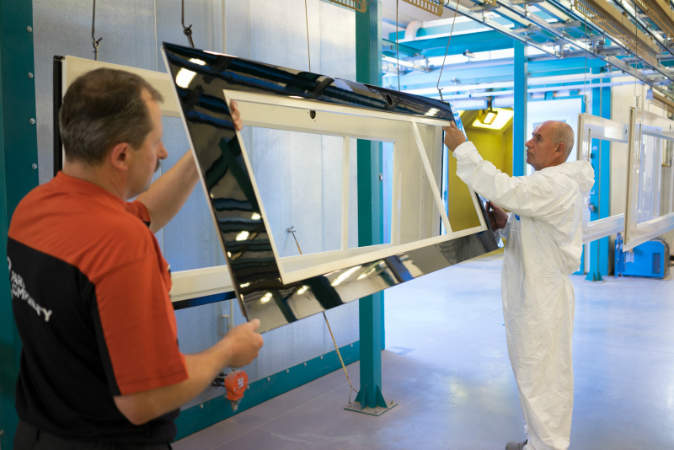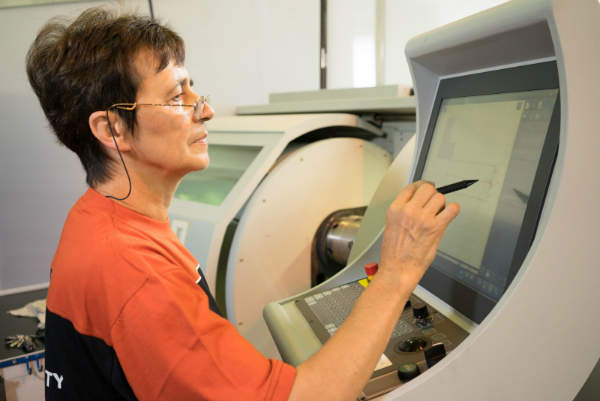
Pars Komponenty develops and manufactures pneumatic and electrical door systems, windows, luggage racks, lifting platforms for disabled passengers, and interior partitions for railway cars, metros, trams and buses.
The company performs machining, welding, bonding, painting and bending services using state-of-the-art technology, including fully certified bonding and welding solutions meeting A1 (according to DIN 6701) and CL1 (according to EN 15085) standards, computer numerical control (CNC) precision machines, paint shops with powder and liquid systems, as well as a final assembly shop.
In addition, Pars Komponenty’s professional service and support team provides first article installations, training, technical support and on-site services, as well as after-sale spare parts management and logistics.
Door systems for rail vehicles
Pars Komponenty provides mechanical, manually controlled and automatic door systems for trains. Automatic doors can be powered by electric or air-operated systems.
The company’s external doors allow passengers to enter / exit trains and provide access to drivers’ cabins for vehicle attendants, while internal doors enable free movement between rail cars.
Pars Komponenty offers single-wing, two-wing and revolving door systems with single or double-glazed windows for vehicles moving at speeds up to 200km/h.
It also provides sliding plug door systems, which features precisely grinded, stainless-steel, linear guiding rods with optimised circular cross-sections. This solution opens and closes effortlessly, even when installed on railcars with slight dimensional inaccuracies and deformations.
Doors are integrated with electronic diagnostics and controller area network (CAN) communication systems. The company also offers fire-resistant doors that comply with EN 45545-3.
The doors also meet technical specifications for interoperability for people with reduced mobility (TSI PRM) and locomotives and passenger rolling stock (TSI LOC&PAS).
Luggage racks with lighting, sensors and reservation systems
Pars Komponenty designs and produces luggage racks for train interiors based on a client’s requirements.
Racks are available in lengthwise, transverse, simple or doubled variants, and can be provided with accessories such as lighting, audio, sensors and reservation systems.
Windows for railcar compartments and driver cabins
Pars Komponenty’s train windows provide light, increased visibility and ventilation for passengers, as well as serve as an emergency exit.
Windows are offered in fixed, semi-automatic, tilting, recoil and revolving versions with simple or thermal-insulating double glazing.
The company bonds glass into basic frames or produces glazed windows using special rubber profiles that allow damaged glass to be replaced without the entire window being disassembled.
Pars Komponenty’s windows can be mounted into vehicles using screws, clips or holders, or bonded separately or together with a perimeter frame.
Ramps and platforms for handicapped rail passengers
Pars Komponenty provides ramps and platforms that allows handicapped passengers to comfortably enter and exit trains.
The mechanical ramps can be manually unfolded and folded back into a default position, while platforms are available in automatic and semi-automatic variants, with the former not requiring an attendant.
The platforms are driven by an electric drive with three 300V active current (AC) or 24V direct current (DC). Electronic diagnostics and controller area network (CAN) communication systems are integrated into train door systems.
Ramps and platforms meet TSI PRM and TSI LOC&PAS standards and carry a TSI approval.
Train compartment partitions
Partitions are used to divide entrance and passenger areas, close off passenger compartments, and optically divide open-space cars.
The company produces opaque or glass partitions that meet TSI PRM and TSI LOC&PAS requirements, and can be supplied with or without integrated doors.
In addition to standard partitions, Pars Komponenty also offers a fire-resistant partition meeting the EN 45545-3 standard.
Moveable step bridging plate for train entrances
Pars Komponenty’s Stepper is a 1,400mm x 600mm moveable solution that facilitates train boarding.
The Stepper’s adaptive design features light aluminium alloy materials and is strong enough for rolling stock applications with speeds of up to 200km/h.
Designed to prevent water accumulation, it also offers fully integrated heating and a de-freeze function, which helps to prevent it becoming slippery even in adverse weather conditions.
The solution features intelligent control functions and an independent central processing unit (CPU) that facilitate safer and faster access to / from train cars. A manual emergency mode allows the user to retract and lock the step to move it into the optimal position.
Featuring a modular, plug-and-play concept, the Stepper can be easily assembled and installed on a variety of rail cars, ranging from light rail vehicles (LRV) and metros to intercity trains. It can also be used as a gap filler and bridging plate for rail vehicles.











